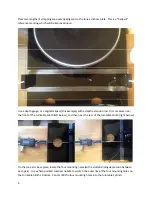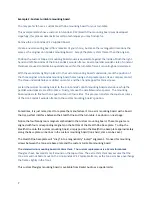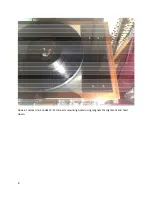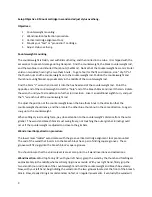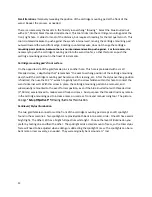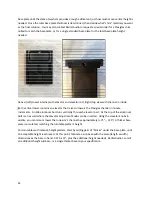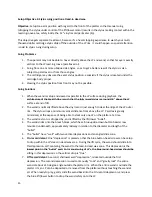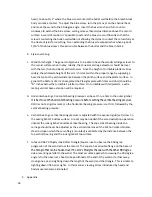
head), to about 1/2” where the blue screw contacts the bullet well before the breech block
body can make contact. To adjust the blue screw, turn the arm over on the channel back
and move the wand to the 90-degree angle. Insert the hex wrench and turn counter-
clockwise to extend the blue screw, setting more vertical stylus distance above the record
surface. A word of caution: it’s possible to extend the blue screw sufficiently so that the
screw is contacting the bullet-well while not allowing the stylus to contact the record fully at
the desired stylus force setting. Over-extending the blue screw approaches when a gap of
1/16” of the blue screw’s thread is visible between the bullet and the breech block.
b.
Stylus overhang:
c.
Wand/Arm height: The general objective is to be able to have the wand/cartridge at level to
the record surface when in play. Ideally, the tone arm carriage elevators should be level
with the two (front and back) vertical towers. Since the height of turntable platters varies
widely, the wholesale height of the arm is first set within the proper range by supplying a
base that spans the vertical distance between the plinth surface and the platter surface. In
general the bottom of arm’s base plate (the Plexiglas plate with holes and slots) should be
“N” inches below the turntable’s platter surface. On turntables with tall platters, a extra
mating vertical base extension will be required.
d.
Horizontal bearings: horizontal bearing pressure can be set thru a hole in the outer gimbal.
It is best to set the horizontal bearing pressure before setting the vertical bearing pressure.
It is best to set the horizontal bearing pressure before setting the vertical bearing pressure.
Delrin is not as rigid as metal, so the horizontal bearing pressure is set first, followed by the
vertical bearing pressure.
e.
Vertical bearings: vertical bearing pressure is adjusted with the exposed grub (set) screw on
the outer gimbal’s bottom surface. A reset may be needed if the wand extraction operation
unseats the inner gimbal’s bottom vertical bearing. The top vertical bearing inside the
carriage should never be adjusted, as the vertical clearance of the M2 horizontal stainless
steel rod (upon which the servo flag is mounted) is calibrated by the distance between the
top vertical bearing and the inner gimbal’s top surface.
f.
Johnson RAS-70 Polystyrene Rafter Triangle/Square: use to observe the 90-degree
progression of the wand across the record. The square has a double-flange on the base of
the triangle that can be hooked over the arm’s Plexiglas channel with the other 90-degree
18
the triangle that can be hooked over the arm’s Plexiglas channel with the other 90-degree
side presenting parallel to the wand. The most accurate approach to viewing the 90-degree
angle is for the observer’s head to be positioned at the end of the wand or further away,
closing one eye and sighting down the length of the wand and the triangle. This is similar to
sighting down rifle barrel sights. In this manner, viewing errors introduced by head and
body movements are eliminated.
2.
Appendix



